
Third-quarter economic growth continued at a solid pace as domestic demand grew robustly. Slowing foreign growth continues to weigh on output in the United States, underscoring the importance of policies that promote continued strong and consistent domestic demand. Last week’s omnibus budget and tax agreement will help encourage these positive domestic trends. But there is more work to do, and the President remains committed to policies that will boost our long-run growth and wages: including opening our exports to new markets through high-standards free trade agreements like the Trans-Pacific Partnership and raising the minimum wage.
FIVE KEY POINTS IN TODAY'S REPORT FROM THE BUREAU OF ECONOMIC ANALYSIS (BEA)
1. Real Gross Domestic Product (GDP) rose 2.0 percent at an annual rate in the third quarter, according to BEA’s third estimate. GDP grew at a slower pace than the 3.9 percent rate in the second quarter. Third-quarter GDP growth was boosted by consumer spending (which rose 3.0 percent), business fixed investment (which rose 2.6 percent) and residential investment (which rose 8.2 percent). However, inventory investment—one of the most volatile components of economic output—subtracted 0.7 percentage point from overall growth. Net exports continued to weigh on output, subtracting 0.3 percentage point amid slowing global demand. Export growth remains well below the pace observed earlier in the recovery. Overall, real GDP rose 2.1 percent over the past four quarters.
Real Gross Domestic Output (GDO)—the average of product-side and income-side measures of output—rose 2.3 percent in the third quarter, a faster pace than GDP alone. CEA research suggests that GDO is potentially more accurate than GDP (though not typically stronger or weaker) over the long term. GDO is estimated to have grown 2.1 percent over the past four quarters, the same pace as GDP.
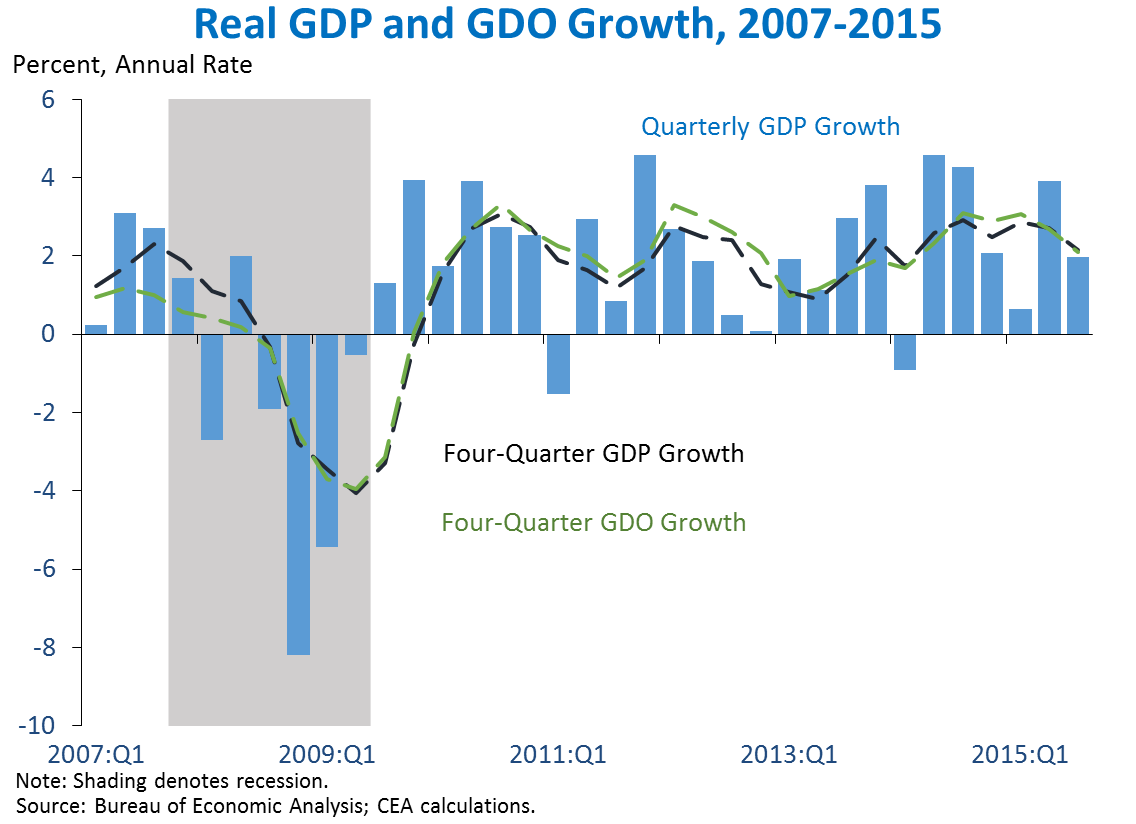
2. Third-quarter real GDP growth was revised down 0.1 percentage point at an annual rate. The downward revision was entirely accounted for by a somewhat larger decline in inventory investment than previously estimated. The change in inventory investment during the third quarter is now estimated to have subtracted 0.7 percentage point from annualized GDP growth. Inventory investment is an especially volatile component of economic output, and growth in Private Domestic Final Purchases (PDFP, see point 5)—which captures the most persistent and stable components of GDP—was revised up 0.1 percentage point. Revisions to other components were small and mostly offsetting.
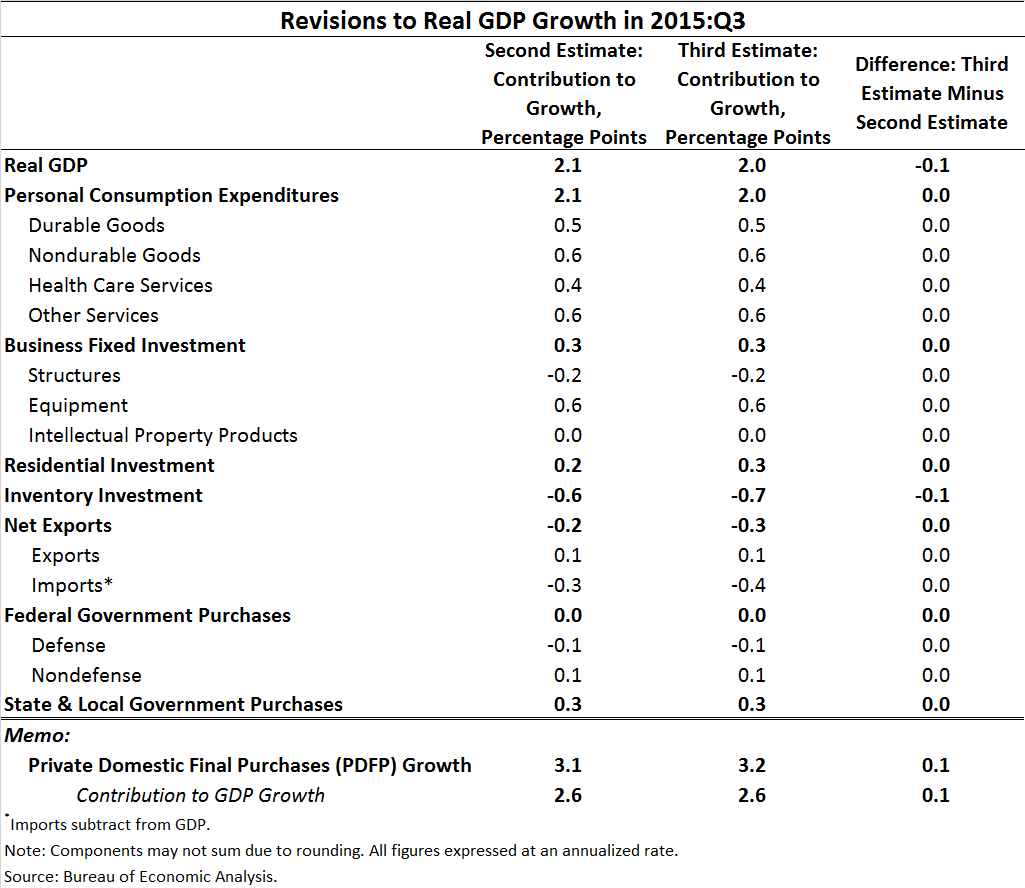
3. After decreasing sharply during the financial crisis, residential investment has risen throughout this recovery—but upside potential for growth remains. Residential investment rose from a trough of 2.4 percent of GDP in the third quarter of 2010 to 3.4 percent in the third quarter of 2015. But in the years before the onset of the housing bubble, residential investment was a considerably larger share of the economy—around 5 percent in 2000. Over the past four quarters, residential investment has grown 9.4 percent—the strongest four-quarter growth rate since the bounce-back from the financial crisis in 2012 and 2013.
One important structural challenge facing the supply of housing is the rise in excessive or unnecessary land use regulations. While land use regulations sometimes serve reasonable and legitimate purposes, they can also give extra-normal returns to entrenched interests at the expense of others. I recently discussed these trends—and their links to both aggregate growth and rising inequality—at the Urban Institute.
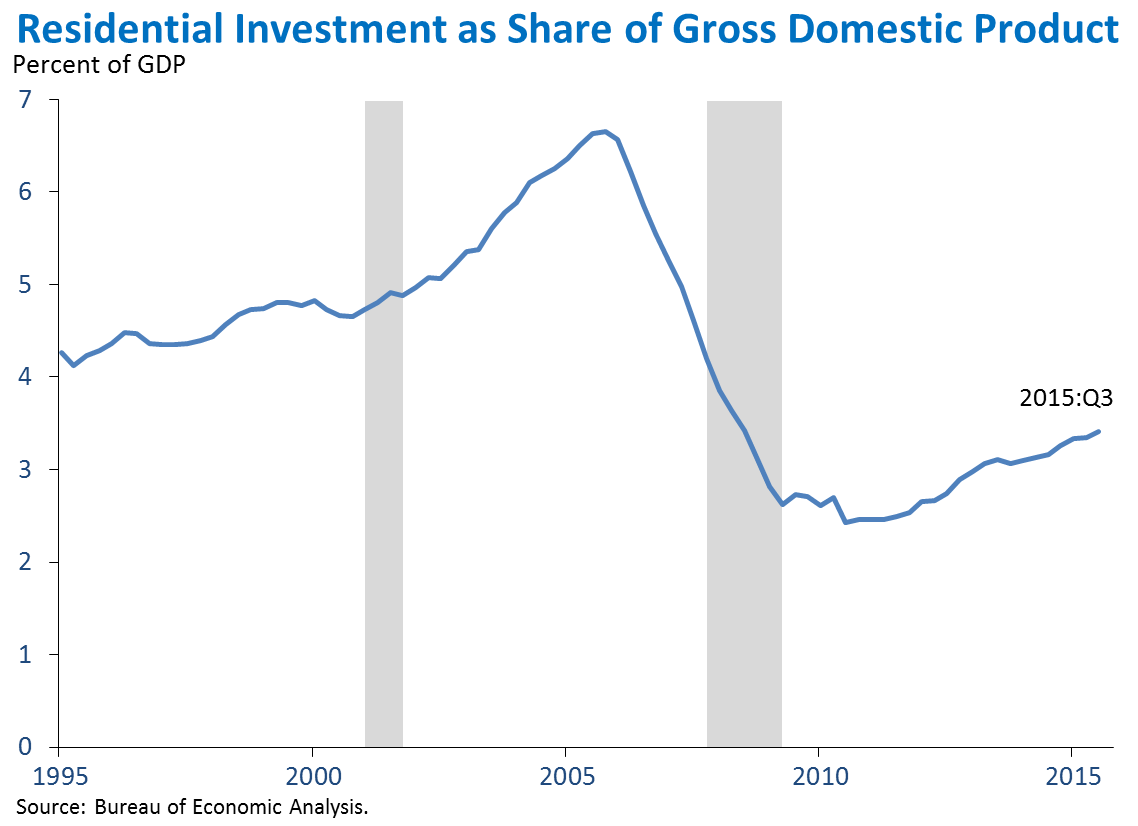
4. Prices of health care services have risen just 0.7 percent over the past four quarters, extending the recent period of exceptionally slow health care price inflation, while expanding coverage has driven faster growth in aggregate utilization of health care services. Prior to 2015, an increase in health care services prices as low as the 0.7 percent increase over the most recent four quarters had not been seen since 1961. Continuing an unusual pattern in recent years, the increase in the prices of health care services over the last year was only slightly above the overall increase in consumer prices. From 1960:Q1 through 2010:Q1, the inflation rate for health care services exceeded the inflation rate for all consumer goods and services by an average of 2.1 percentage points.
The continued slow increase in health care prices is a major reason that overall per-enrollee health care spending—the metric of health costs most relevant to individuals and families—continues to grow exceptionally slowly in both the public and private sectors. However, aggregate health care spending—reflecting aggregate utilization of health care services—has grown at an elevated rate in recent quarters. The 4.6 percent increase over the most recent four quarters remains well above the 1.9 percent average rate from 2010 to 2013. This recent acceleration appears to largely reflect increased access to care by the millions of people who have gained health insurance coverage under the Affordable Care Act since the end of 2013. Upward pressure on aggregate utilization growth from expanding coverage is neither a surprise nor a cause for concern and will be temporary, lasting only until coverage stabilizes at its new, higher level in the coming years.
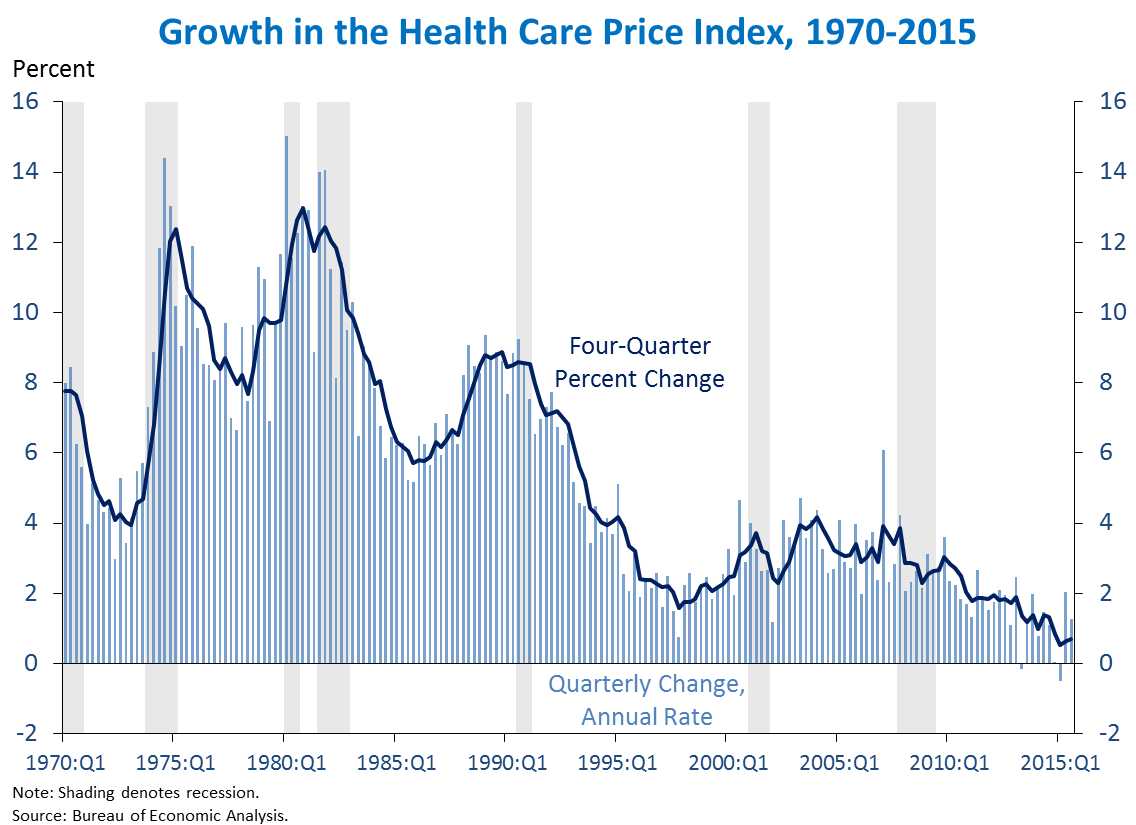
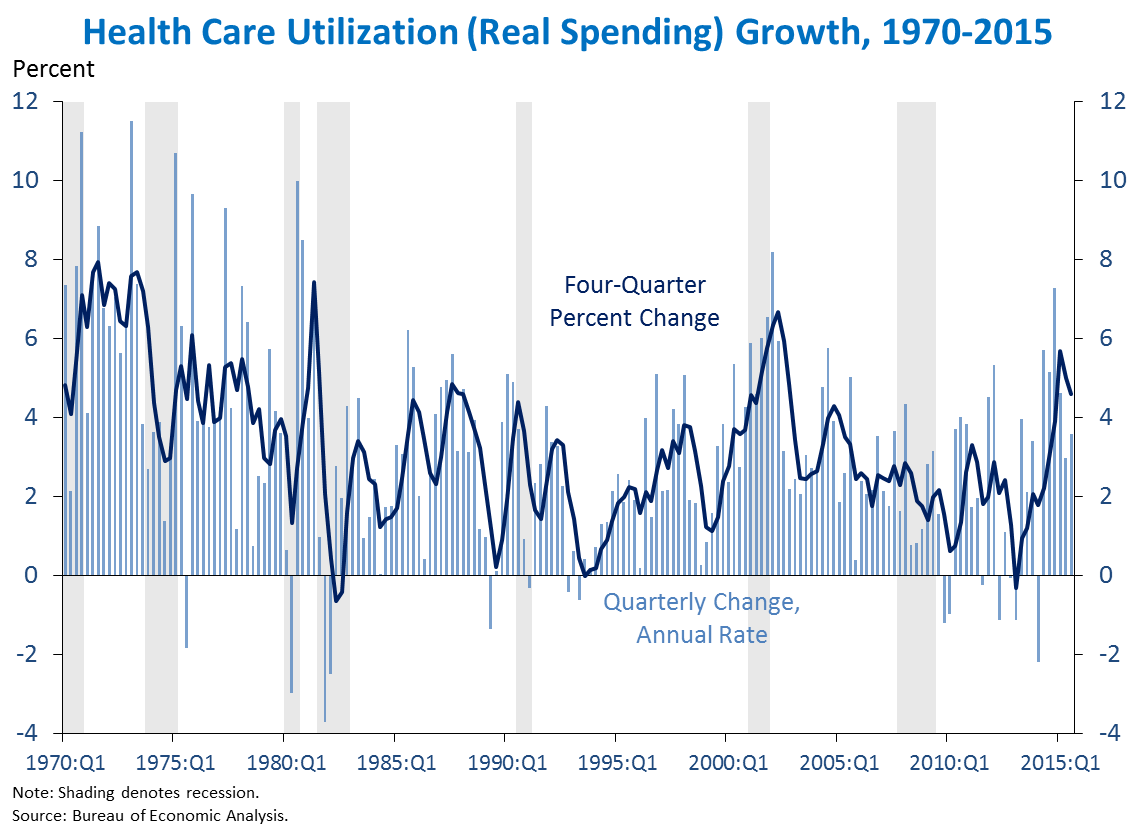
5. Real private domestic final purchases (PDFP)—the sum of consumption and fixed investment—rose 3.2 percent at an annual rate in the third quarter and is growing at a faster four-quarter pace than overall GDP. Real PDFP—which excludes noisier components like net exports, inventories, and government spending—is generally a more reliable indicator of next-quarter GDP growth than current GDP. Overall, PDFP rose 3.2 percent over the past four quarters, compared with 2.1 percent GDP growth over the same period. The especially large gap between PDFP growth and GDP growth is mostly attributable to net exports, reflecting slowing growth abroad. To the extent that systematic patterns emerge in global growth, the information contained in exports may contain an important signal about the headwinds we face from abroad.
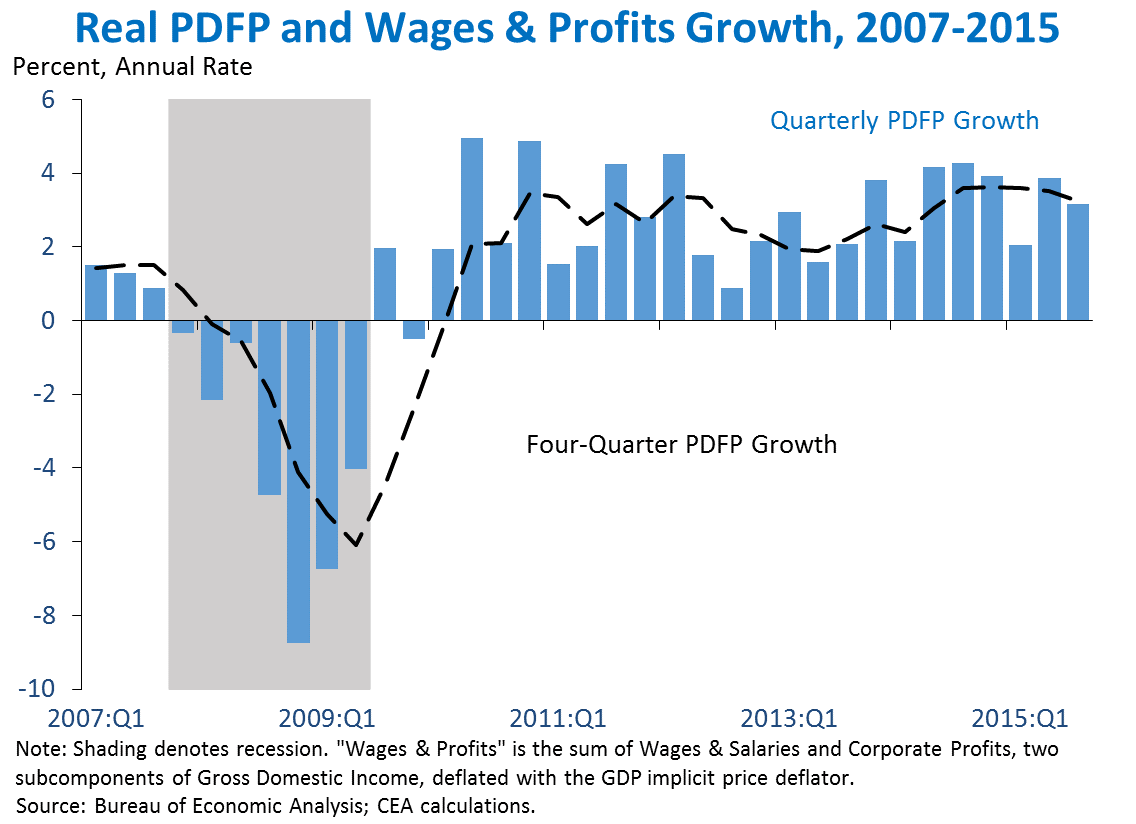
As the Administration stresses every quarter, GDP figures can be volatile and are subject to substantial revision. Therefore, it is important not to read too much into any single report, and it is informative to consider each report in the context of other data that are becoming available.
Jason Furman is the Chairman of the Council of Economic Advisers.


